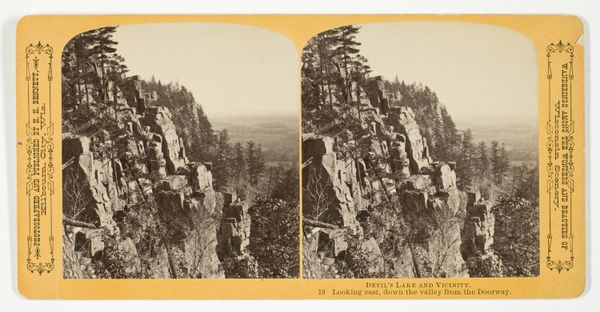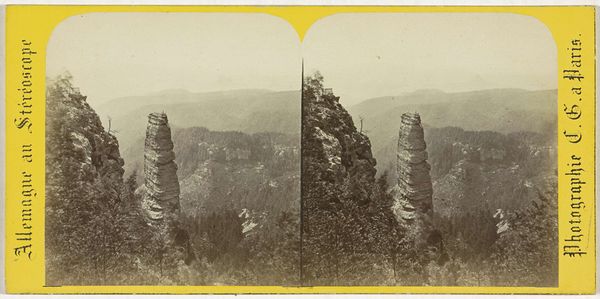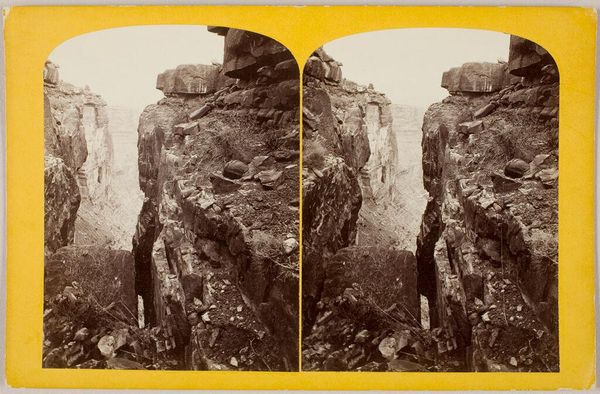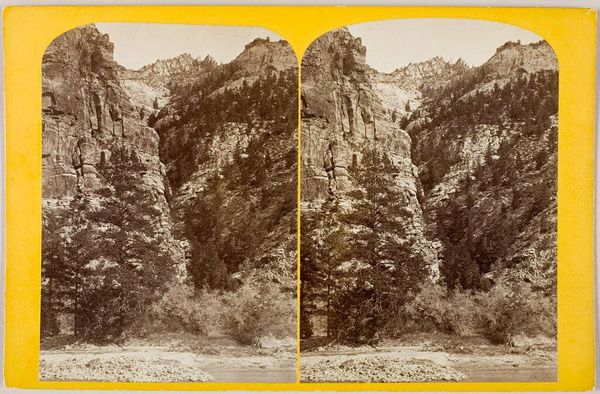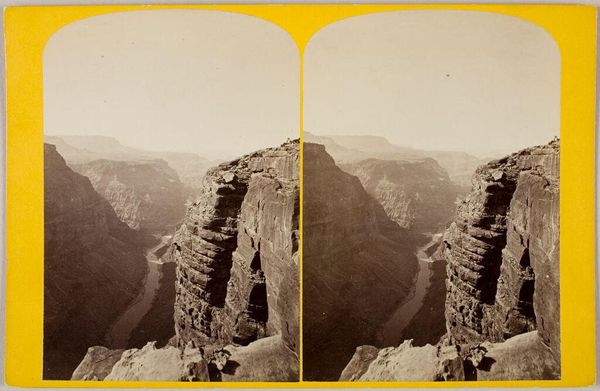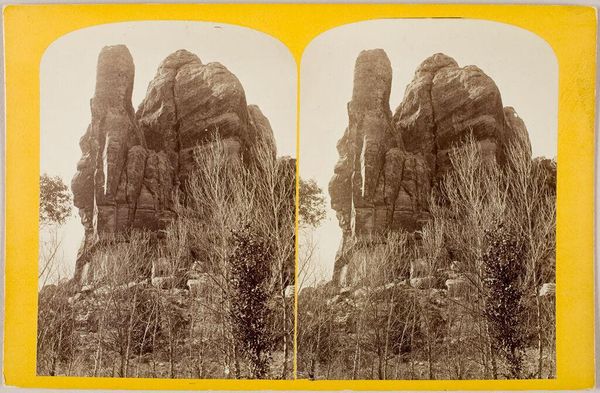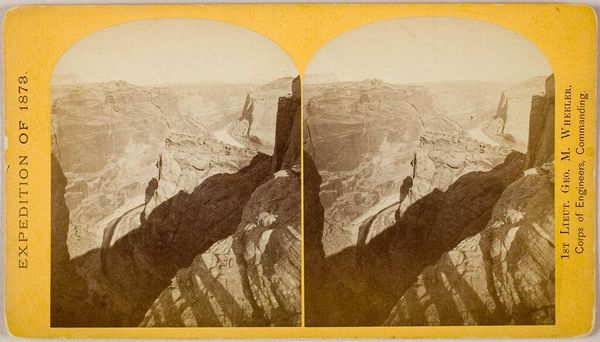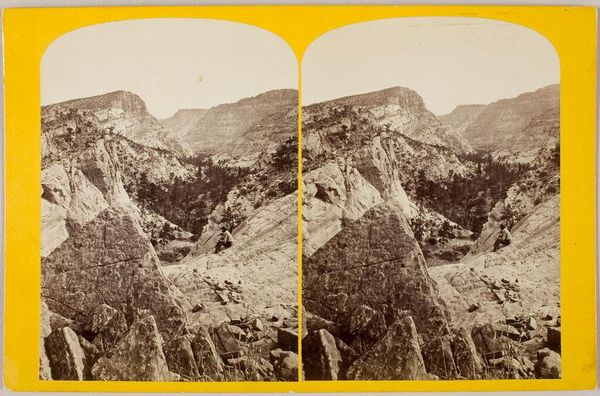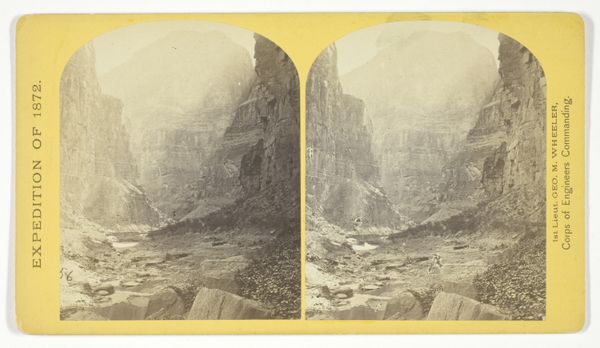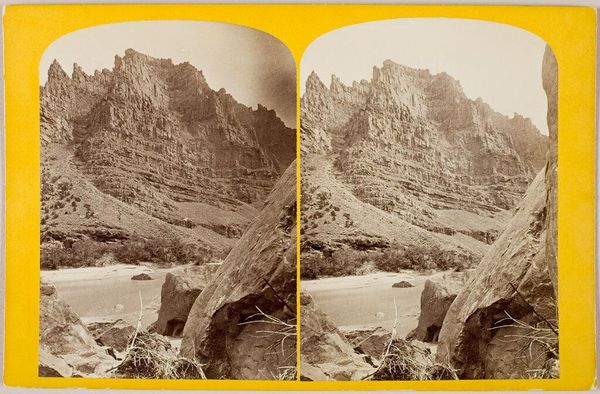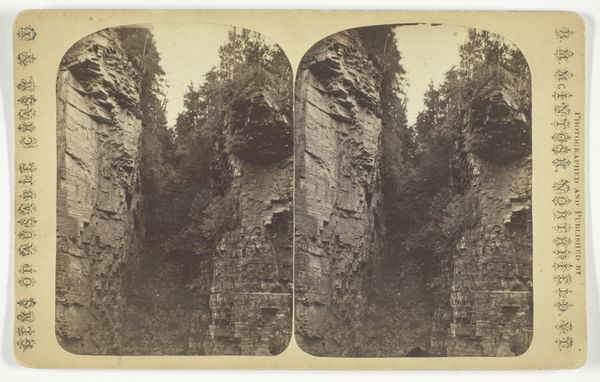
Dimensions: height 84 mm, width 174 mm
Copyright: Rijks Museum: Open Domain
Curator: Welcome. Today we’re looking at an intriguing image by Charles Gaudin, "View of the Bastei and the Elbe Valley, Germany," likely taken between 1860 and 1870. Editor: My initial impression is one of serenity tinged with monumentality. Those stark rock formations amidst the soft forest landscape are so striking. And that ethereal, almost painterly quality... incredible for photography of that period! Curator: Indeed. What's remarkable here is this gelatin-silver print offered as a stereoscopic image. Considering its social context, it allowed for mass consumption of visually impressive and rather romantic landscape scenes through cutting-edge technology. Editor: It makes you think about labor and accessibility too. Producing and circulating images like this, though photographic, involved craft—skilled darkroom work, choice of materials… it’s not a straightforward industrial process as some might assume. How were these landscapes received? Curator: Well, remember that during this period, photography was increasingly utilized by middle classes keen on collecting views and landmarks from Europe; the stereoscope became a hugely popular viewing device for consuming such scenes, domesticating them into bourgeois households as keepsakes or signifiers of cultural knowledge. Editor: And isn't there an inherent politics of imagery in selecting *this* scene? This romantic view caters to and perhaps constructs a very specific perception of German national identity tied to an appreciation for natural grandeur. The very act of its mass production altered the reception of "nature" itself. Curator: Certainly. And the framing... isolating those particular rocks in the valley… that reinforces an ideal rather than an objective truth, manipulating the viewers understanding of both German topography and Romantic sentiment at play during the period. Editor: Reflecting on its making and reception reshapes our own view. Seeing this today, it’s a meditation on the construction of vision, of memory, and on the commodification of idealized landscapes as tokens of power and pleasure. Curator: Precisely, and perhaps considering its materials allows one insight to question its permanence as opposed to its message, prompting engagement beyond immediate sensory experience.
Comments
No comments
Be the first to comment and join the conversation on the ultimate creative platform.

